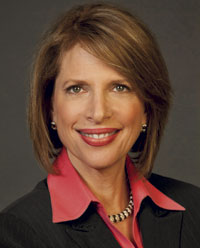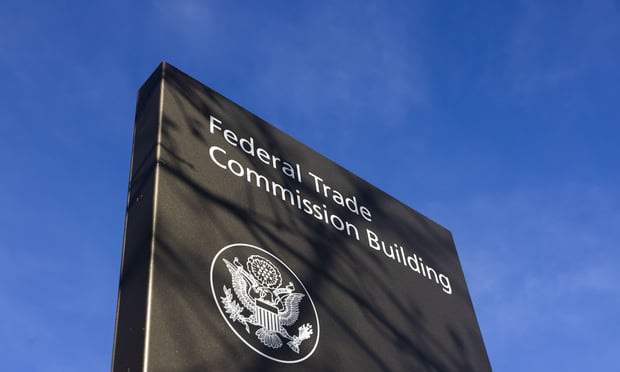 Procurement transcends disparate industry sectors such asentertainment and pharmaceuticals. Lisa Martin, chief procurementofficer at Pfizer, worked early in her career as a buyer andexpeditor at NBC when the network was acquired by General Electric,which she says highly values the procurement and sourcingfunction.
Procurement transcends disparate industry sectors such asentertainment and pharmaceuticals. Lisa Martin, chief procurementofficer at Pfizer, worked early in her career as a buyer andexpeditor at NBC when the network was acquired by General Electric,which she says highly values the procurement and sourcingfunction.
“It was a very good training ground,” Martin says, adding thatworking in the entertainment business, with its creativepersonalities and greater flexibility, gave her another importantstrength. “I definitely grew a thick skin,” she says.
|Martin was working at Warner-Lambert in 2000, when it wasacquired by Pfizer. Since then, she has risen to senior vicepresident and head of the $67.4 billion pharmaceutical company'sglobal procurement function, leading the development andimplementation of sourcing strategies that leverage the $17 billionPfizer spends annually. Two years ago, Martin was given additionalresponsibilities for operations, including managing real estate aswell as the facilities at the company's research and developmentand commercial sites. She now sits on the company's finance andbusiness operations leadership team and reports directly to CFOFrank D'Amelio.
|Martin notes that Pfizer places a strong emphasis on workingcapital. Her office, through its control of the company'sconsiderable spending on supply, plays a major role in meetingthose working capital targets.
|The biggest challenge in meeting working capital and othergoals, she says, is the pace of change nowadays. “You can't get toocomfortable because nothing stays the same from day to day, fromthe composition of the company to the supply chain managementarea,” Martin says. “You always have to think as proactively aspossible but maintain very solid business continuity plans. Thatbalance is a key challenge.”
|And it's one that requires bringing “internalstakeholders” into the fold. “You have to make sure you're carvingout enough time to properly align with the business unit leadersand other functional leaders in the company,” Martin says.
|In making the argument for change, it's essential to have awell-developed business case, and at least as important to have thecourage to engage colleagues in “tough” conversations, she says.That's where a thick skin can come in handy.
|A few years ago, Martin argued for streamlining the marketingagencies chosen by local business leaders. “By letting the factsspeak for themselves, leadership came around to support theapproach as well,” she says.
|Such communication has helped transform procurement from atransactional function to one that's strategic and adds value,saving Pfizer between 3% and 7% annually on procurementspending.
|Martin also takes pride in developing the next level of leadersamong the executives she works with, whose backgrounds range fromconsulting to finance to chemical engineering. She tries to givethem new responsibilities and push them to develop new skills. Forexample, procurement and operations were traditionally two separatefunctions at Pfizer, but now in some regions, including LatinAmerica, they are headed by the same executive.
|Not all markets are ready for consolidating those roles,however. Rapid growth in the Africa and Middle East region a fewyears ago prompted Martin to establish a procurement team there,although the region's operations are still run out of Pfizer's moreestablished Eastern European office.
|“We may look to combine the roles as the market matures, but weneed to walk before we run, and be sure people are successful inthose roles,” Martin says.
|Ultimately, understanding when and how todeploy teams comes down to managing risk. Martin says a recentroundtable discussion organized by the Institute of SupplyManagement, where she is chairperson emeritus, revealed procurementexecutives view risk as their biggest challenge.
|The heightened focus on risk means procurement must work evermore closely with treasury to determine suppliers' vulnerabilities.Pfizer has, of course, been working to manage these risks for along time, but the steady stream of man-made and natural crisesover the past several years has added new urgency.
|“Now we're making sure wherever a disaster could happen, we havea good business continuity plan in place and there arecommunication protocols mandating who is responsible for what,”Martin says.
|Procurement evaluates its 150 or so top-tier suppliers everyyear and adds new suppliers when appropriate, she says. “Ourinternal audit is reviewing that program now, and it will have somecontinuous improvement-type suggestions. I look at that as apositive.”
|See the full 2012 Women in Finance list here.
|See full coverage of the 2012 list here.
|Complete your profile to continue reading and get FREE access to Treasury & Risk, part of your ALM digital membership.
Your access to unlimited Treasury & Risk content isn’t changing.
Once you are an ALM digital member, you’ll receive:
- Critical Treasury & Risk information including in-depth analysis of treasury and finance best practices, case studies with corporate innovators, informative newsletters, educational webcasts and videos, and resources from industry leaders.
- Exclusive discounts on ALM and Treasury & Risk events.
- Access to other award-winning ALM websites including PropertyCasualty360.com and Law.com.
*May exclude premium content
Already have an account? Sign In
© 2024 ALM Global, LLC, All Rights Reserved. Request academic re-use from www.copyright.com. All other uses, submit a request to [email protected]. For more information visit Asset & Logo Licensing.







